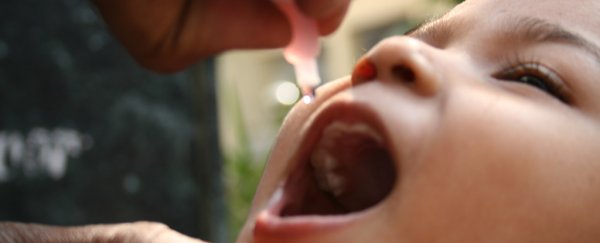Vaccinations are medicine's greatest lifesavers. Since the turn of the century, new modelling shows immunisations for 10 major diseases have prevented the deaths of 37 million people in nearly a hundred low- and middle-income countries (LMICs).
By 2030, that number could double, and many of the lives saved will be young children.
Without access to certain vaccinations, which protect humans against diseases like measles, rotavirus, HPV and hepatitis B, kids born in 2019 (in the 98 LMICs investigated) who are not vaccinated are 45 percent more likely to die before the age of five, researchers say.
Even into adulthood, the difference between those who are vaccinated and those who aren't is stark. The new model shows children born in 2019 in these countries will experience 72 percent lower mortality over their lifetimes if they are vaccinated for the ten diseases modelled.
"Our study signifies the huge public health benefits that can be achieved from vaccination programmes in low-income and middle-income countries," says epidemiologist Neil Ferguson from Imperial College London in the United Kingdom.
"By projecting up until 2030 in these 98 countries we have provided insight on where investments in vaccine coverage should be directed to achieve further gains."
Putting a number on lives saved from vaccination is tricky and imperfect business, but that doesn't mean it's not worth calculating.
The new model has limitations, especially since many LMICs do not have complete or consistent data on disease burden and death. That said, it's a valuable estimate and the largest scale study on the subject to date, taking into account vaccination programs against hepatitis B virus, Haemophilus influenzae type B, human papillomavirus, Japanese encephalitis, measles, Neisseria meningitidis serogroup A, Streptococcus pneumoniae, rotavirus, rubella, and yellow fever.
Sixteen independent research groups applied multiple models for each of these pathogens.
Over the lifetime of those born between 2000 and 2030, the findings reveal 120 million deaths will be averted by vaccination, of which 96 million will be saved by the measles vaccine and the hepatitis vaccine together.
The results largely align with previous estimates, which found vaccines have saved the lives of nearly 20 million children in some of 73 of the world's poorest countries since 2001.
The measles vaccine alone was recently found to have prevented more than 20 million deaths around the world since the beginning of the 21st century.
"By estimating how much higher mortality levels would be if there were no vaccination programmes in place, our study has highlighted how crucial it is to maintain high coverage levels," says Katy Gaythorpe, who studies public health at Imperial College London.
Yet sustaining the status quo is only part of the picture. Expanding coverage is also a key priority, especially for some of the newer vaccines.
If HPV vaccination programs can be accessed by enough young people, for instance, experts think cervical cancer could be eliminated in LMICs by the end of the century. In fact, the new model predicts increasing HPV coverage in girls will save more lives per person vaccinated than any other immunisation activity.
Vaccination programs to prevent some forms of pneumonia were also found to be highly effective and could be expanded to great success in poorer countries. These vaccines, known collectively as PCVs, had the largest impact on deaths of children under five.
Estimates from this modelling will no doubt change as our understanding of disease and our vaccination programs improve, but the sheer scale of this study gives us a great baseline to work with.
Vaccine programs clearly work. Now we just need to make sure everyone has access.
The study was published in The Lancet.
